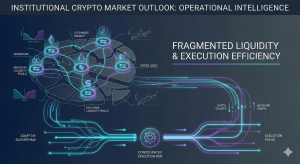
On May 7, the financial world witnessed how Terra, the second-largest DeFi ecosystem at the time, collapsed, and the third-largest stablecoin (UST) before the crash lost its peg to the dollar, forcing LFG to sell 80,000 BTC for Bitcoin when it sold 80,000 BTC. The coin created a lot of selling pressure, falling 23% in the days following the Terra crash, which shook the entire crypto market, with the cryptocurrency market cap dropping 34%, from $1.75 trillion to $1.15 trillion.
Centralized crypto lending platforms (CeFi) have also faced challenges since Terra crashed, with Celsius on June 13 becoming the first CeFi platform to suspend customer withdrawals. As market fears persist, customers’ rush to get their funds back has created a situation akin to a bank run, where brick-and-mortar loans are compromising users due to a lack of liquidity to meet their demands.
Large institution Three Arrows Capital is one of the most prominent investors in the blockchain industry. With over $10 billion in assets under management, it invests in Layer1 blockchains including Terra, DeFi protocols, centralized crypto equity firms, NFTs, and Web3 games. However, it all turned into massive debt after Terra collapsed due to excessive leverage. Its VC group failed to respond to a margin call and went into liquidation, and has now filed for bankruptcy protection to prevent creditors from confiscation of company assets.
Terra is an emerging DeFi ecosystem led by its native Anchor protocol with over $29 billion in TVL. But the collapse of Terra has caused a sea change in the DeFi field. TVL fell to its highest level since early 2021. , Defi’s TVL is estimated at $70 billion, down 69% from the first quarter close and down 33% from a year ago.
All four of the top 13 thefts in virtual currency history occurred in June of this year. A total of $676 million in crypto assets has been stolen in the past 3 months. For DeFi and Dapps, enhancing their security measures to protect users and their reputation is entirely positive.
The protocosmic world, which has been on a high since November of last year, faces a systemic decline. Despite the bearish trend in the market, the digital real estate market has posted some positive indicators. Seven of the top 10 NFT sales in May belonged to the Otherside series, and the reserve price of TSB and Decentraland land has risen by nearly 40% since the beginning of July. Additionally, many VC investors remain bullish on the industry’s prospects, pouring more than $4.6 billion into the development of Metaverse projects and infrastructure. According to Citi forecasts, the metaverse industry will grow into a $13 trillion industry by 2030.
The blockchain industry is going through one of the craziest times, and despite the downturn in the overall market sentiment, there is still reason to be optimistic, and the market is returning to the original and focusing more on the application and creativity of the project, and networks such as Cardano and Ethereum are about to reach An important milestone, which will mark an important driving force for the entire industry. In addition, the big exchanges that have been on the sidelines are also taking this opportunity to start various acquisitions and cooperation matters, which will promote the development of the entire virtual currency market; Even though the currency price has maintained a downward trend since the high point of last year, the market has not reacted to the current position even if there is more bad news and has broken the bottom. This is the time when most of the remaining institutions are willing to invest additional resources to enter the market. The liquidation of many institutions and the run on various platforms have made many countries see the importance of digital assets and begin to pay attention to the future direction of this market, which will enable relevant regulatory agencies to speed up their policy-making process and make the market in the second half of the year. The outlook is brighter and more optimistic.




